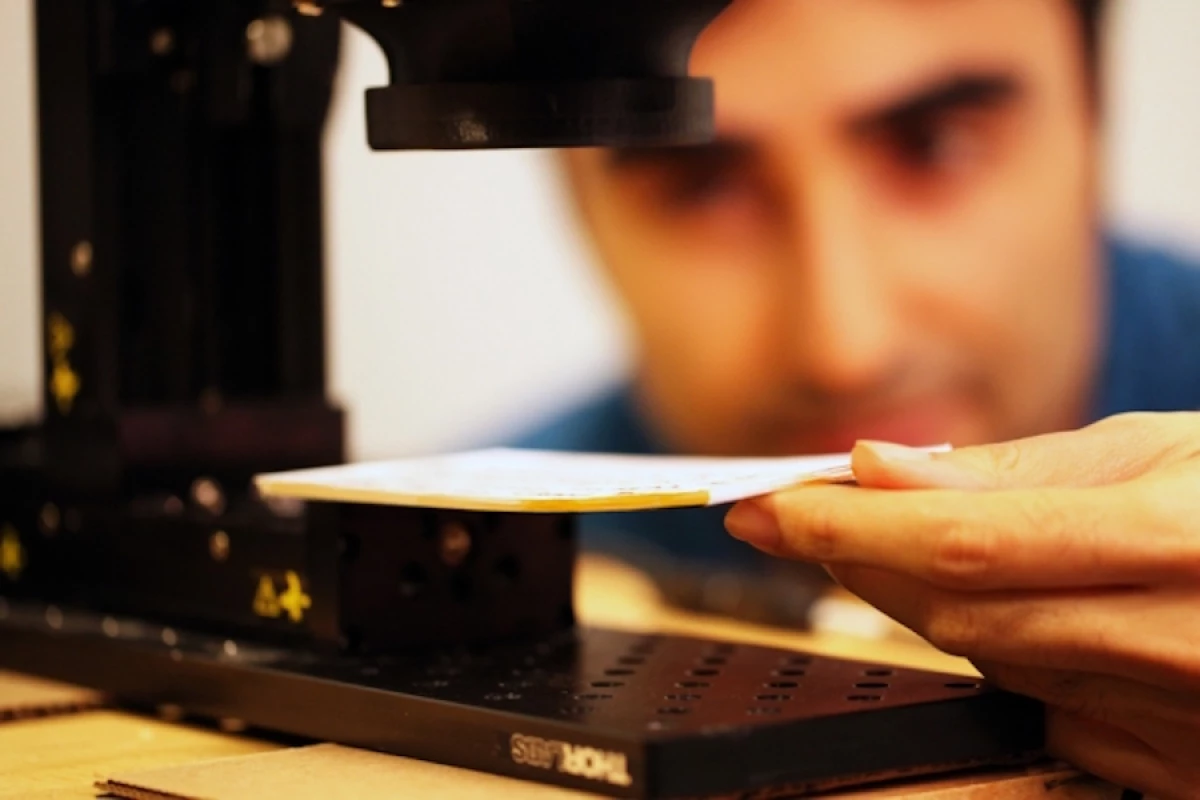You might want to keep your journal in a safer place – with help from their colleagues at the Georgia Institute of Technology, a team of researchers from the Massachusetts Institute of Technology (MIT) has developed a prototype imaging system that aims to read through closed books. In their recent study, the team tested the system using a stack of papers with one letter printed on each and found that it could correctly identify those written on the top nine sheets.
The new system takes advantage of terahertz radiation – the band of electromagnetic radiation that lies between microwaves and infrared light on the electromagnetic spectrum. Although other wave types – such as X-rays – can also penetrate surfaces, the team chose to use terahertz radiation because it can differentiate between ink and blank paper in a way that X-rays cannot. This stems from the fact that different chemicals absorb different terahertz frequencies to varying degrees, giving each chemical – such as those used in ink and paper – a unique frequency signature.
MIT algorithms designed to capture images from each paper use this absorption difference to make the characters as clear as possible. Afterwards, algorithms developed by Georgia Tech were able to interpret the often-distorted images as letters.
"There is a spectral difference in absorption of a blank paper and ink material," Barmak Heshmat, MIT researcher and co-author of the study told New Atlas. "We tune to that spectral contrast using computational methods to enhance the contrast significantly. This will render the letters visible to our next algorithm, which recognizes the characters."
The terahertz camera in the current prototype of the device emits terahertz radiation in ultrashort bursts. These bursts are reflected back to the camera's built-in sensors from the tiny air pockets that are trapped between each of the pages, which have different refractive indexes.
After hitting the sensor, the radiation is analyzed by an algorithm that determines the distance to each individual page of the book using the difference between its emission time and the time at which the reflected radiation returned to the sensor.
Page distances help the algorithm that renders the images filter out the "noise" created by radiation that bounces around the gaps before returning to the sensor. By pinpointing only terahertz signals with arrival times that are suggestive of real reflections, the device combines this data with measures of the reflections' energy and assumptions regarding the energy profiles of these reflections and noise statistics. Ultimately, this allows the device to shed light on the chemical properties of the surfaces that reflected the terahertz radiation and "read" the letters on each page.
The current device can read up to a depth of nine pages in a stack of paper – after this point, the energy of the reflected terahertz signal is too low for the sensors to be able to distinguish between different terahertz frequency signatures, making letter differentiation impossible. Future research will work on achieving deeper penetration through improving detector accuracy and radiation source power, and the technology could one day be used to look inside books that are too old to open without risking severe degradation.
The findings were published in the journal Nature Communications.




